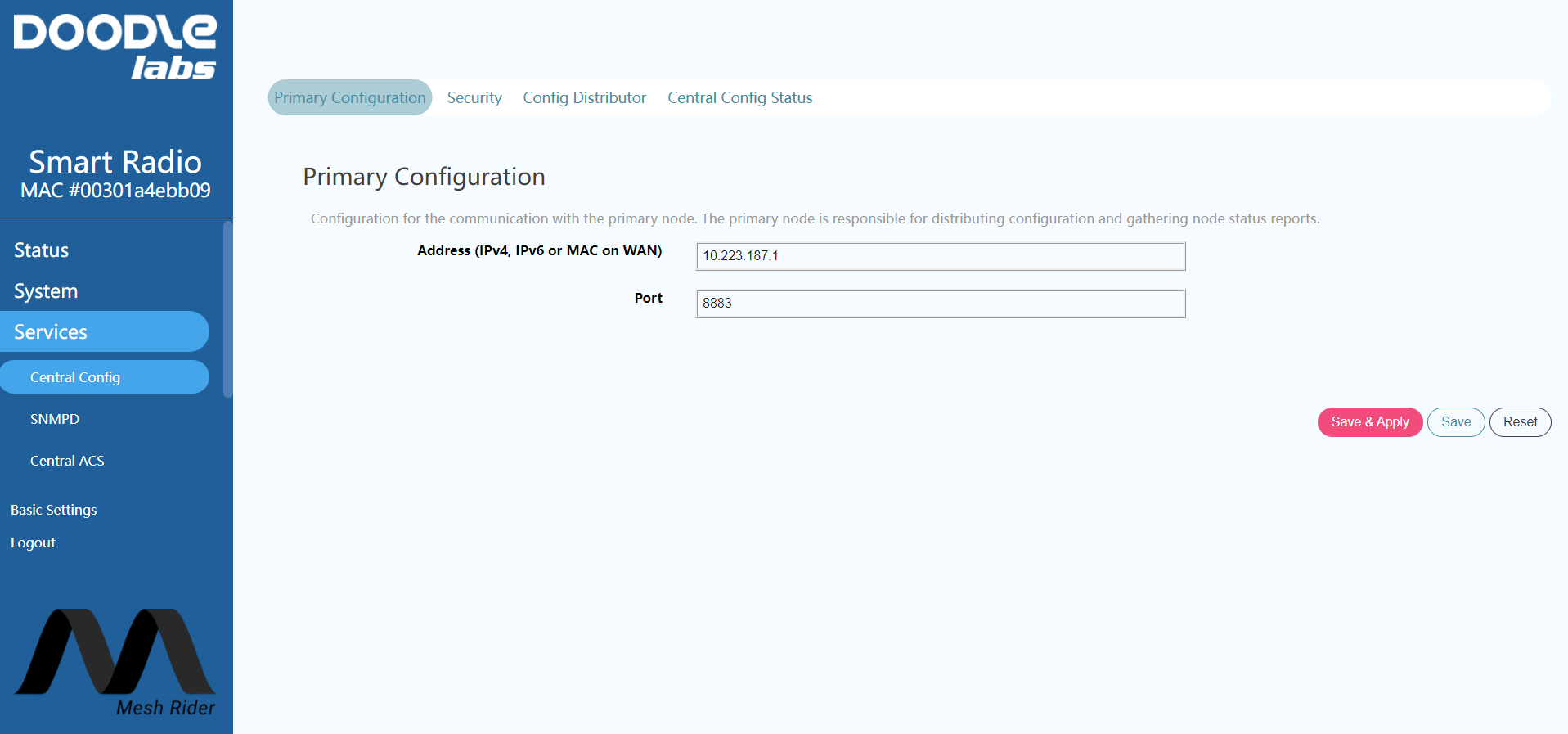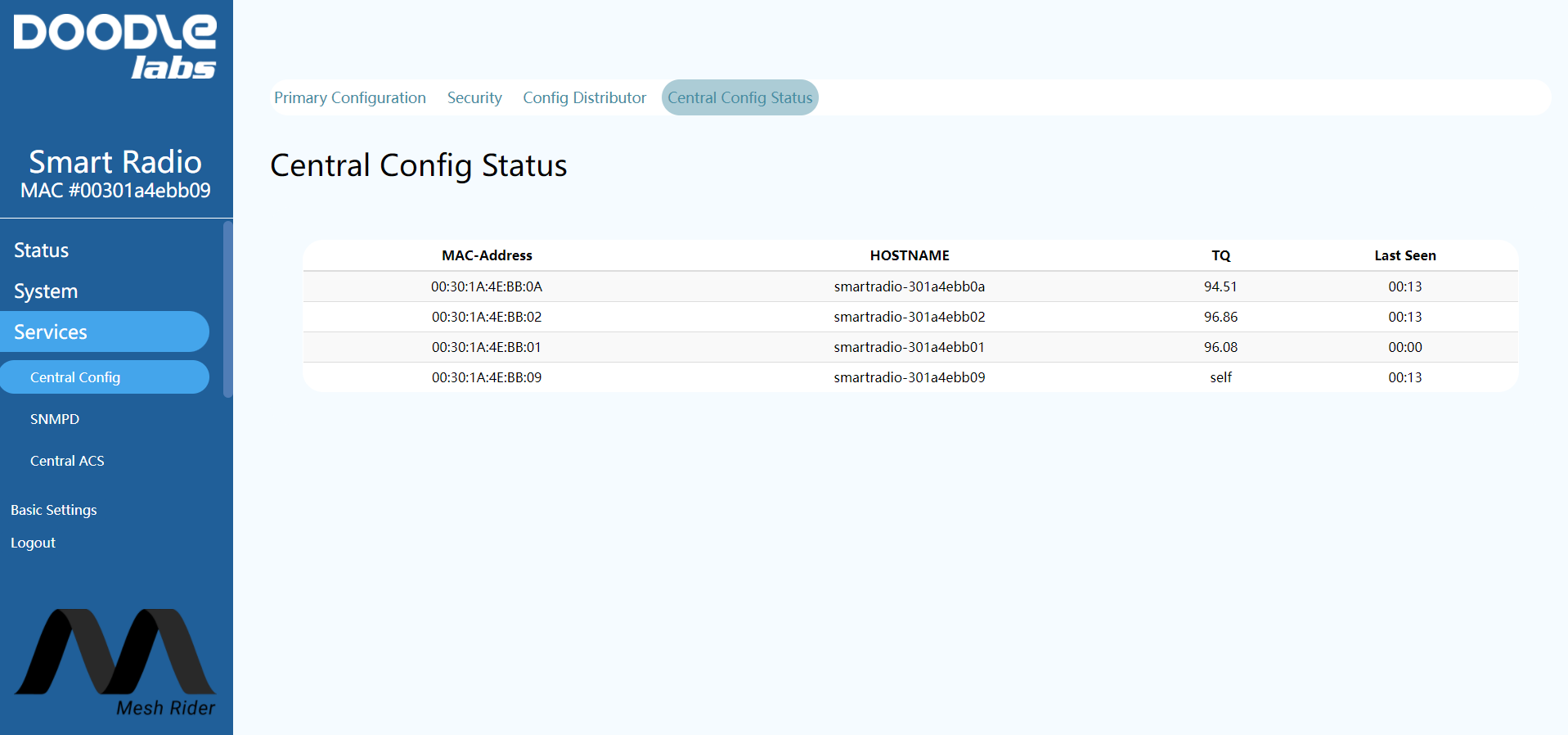Centralized Configuration, ACS, and Link Recovery (LEGACY)
The Central Config, ACS and Link Recovery utilities have been replaced by SENSE as of the July 2023 Beta Resilience Release.
Introduction
With the release of the 2022-02 update of the Mesh Rider OS comes a new Centralized Configuration utility along with automatic channel selection (ACS), and link recovery. All three features use the Central Configuration utility as a basis for operation, therefore Central Config must be set up properly before ACS and Link Recovery will work
Central Config
To enable Central Configuration, you need to choose one node as the primary node. Navigate to Services -> Central Config (Fig. 1).

Fig. 1 Central Config Menu
The primary node is selected by inputting its address (IPv4, IPv6, or MAC) in the Primary Configuration tab and clicking Save & Apply. The Central Configuration utility uses TLS for security, and this can be configured in the Security tab. From the Config Distributor menu, you can update the operating Channel, Distance setting, or TX Power. Additional features are planned in future. It is also possible to send central configuration commands through the CLI. Information can be found in the updated Command-Line Interface Guide.
In the Central Config Status tab, we can see the status of the other nodes in the network. In Mesh modes, TQ (transmit quality) as a percentage. This is the overall TQ from the local node to all other nodes. In AP/Client modes, the RSSI is shown in dBm. The last seen time in minutes:seconds is also shown. This is the time since the last packet from this node was received.

Fig. 2 Central Config Status
Central ACS
Central ACS (Auto-Channel-Selection) allows the radio to automatically select the best operating channel. Central ACS is enabled by navigating to Services -> Central ACS. Central Config must be enabled first.

Fig. 3 Central ACS
Central ACS operates in two modes: global and local. In both modes, the primary node measures background noise in the operating channel every Scan Period seconds and reacts when it exceeds the user-defined Noise Threshold.
In global mode, the primary node instructs all nodes to take background noise readings, collects the information, and then instructs all other nodes to change channels if there is another channel whose background noise is lower by Noise Difference Threshold or more. The timeout when talking to other nodes is Time Wait After Request seconds.
In local mode, the primary node monitor simply instructs all other nodes to change channels if there is another channel whose background noise is lower by Noise Difference Threshold or more.
In general, local mode is simpler and more responsive. We recommend using local mode with the UAV monitor the background noise.
Link Recovery
Link recovery is a new feature which is enabled automatically as long as Central Config is enabled. Essentially, if the channel is changed while a node is inaccessible (for example, out-of-range, or rebooting), then that node will scan and rejoin the network. There is no configuration for Link Recovery, however, take note that it only works for mis-matched channels and not fields like channel bandwidth, SSID, or password.